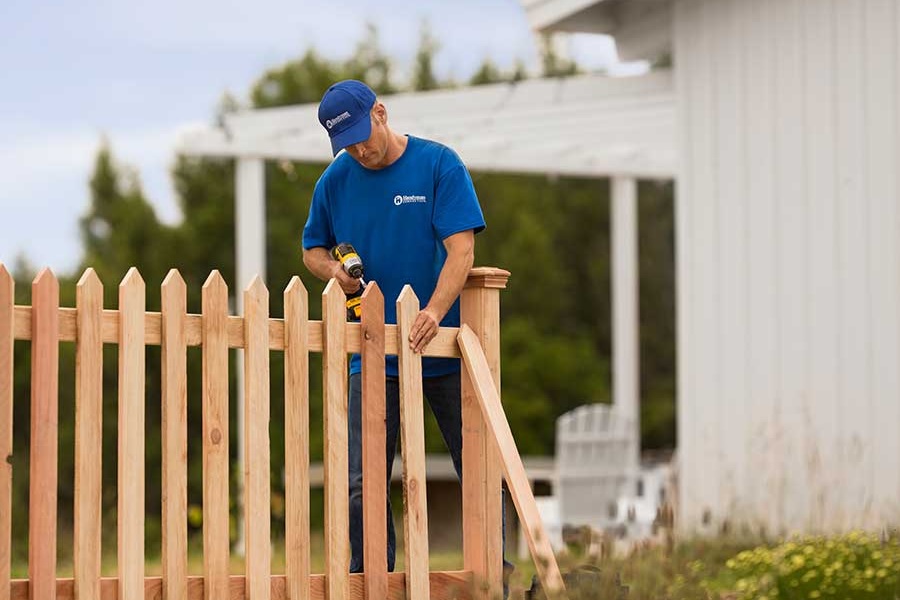
How to repair home fence easily – Best fence repairing tips in 2021
Sun, wind, downpour, snow, decay, and subterranean ice subject wood wall to a fabulous beating. Wood is helpless against nature’s disciplines, particularly spoiling. This implies you ought to consistently fix fencing with the most decay-safe timber you can bear. Pressing factor treated timber has been immersed with additives and endures uncertainly, even with wood that has been covered in the ground.
This sort of wood is costly, be that as it may. Cedar and redwood stand up well underground and are likewise exorbitant. Outside paints and stains function admirably over the ground however are practically futile underneath or on pieces of wall in continuous contact with water.
The parts of a wood fence incorporate vertical posts, rails that run on a level plane from one post to another, and screening material like loads up or pickets. Inspect your fence, regardless of what its sort, and you can presumably distinguish every one of these components.
Decay is a wood fence’s greatest foe. Posts that weren’t as expected treated or set in concrete normally decay away at ground level. Base rails and the bottoms of screening can endure, as well, particularly if vegetation has been scouring against them and catching water.
A rail that is pulled free from at least one of its posts could possibly be salvageable, contingent upon how seriously spoiled the joint is. You might have the option to retouch the break with a 2×4 piece two or three metal T-supports, or you may need to replace the whole rail. You can also check for Fence repair Perth services, they are known for their home fencing. To fix a rail with a 2×4:
Stage 1:
Before you make fix, immerse the harmed territories and a 2×4 generously with a wood additive. This holds the decay back from spreading.
Stage 2:
To make a fitting to help the rail, ensure the rail is level, at that point fit a 2×4 cozily under. Nail the 2×4 to the post with exciting nails. Several nails down through the rail into the projection.
Stage 3:
Carefully caulk the top and sides of the maintenance to keep out dampness.
Excited steel T-supports, accessible at most tool shops and home improvement communities, are fairly less obvious and regularly make a seriously enduring fix. To utilize T-supports in rail fix:
Stage 1: Level the rail, at that point drill pilot openings into the post and rail.
Stage 2: Secure the T-supports to the rail with excited screws.
Stage 3: Caulk the joint.
Stage 4: Paint the T-supports to coordinate with the fence.
Fixing Fence Sections
In the event that the whole rail should be supplanted, destroy that part of the fence and reconstruct it as clarified beneath.
Stage 1:
Cut 2×4 rails to fit level along with the highest points of the posts. The rails can stretch out from one post to another, or a rail can traverse two areas. Measure and slice each rail exclusively to take into account slight varieties in the fence post dispersing. Butt the finishes of the rails firmly together. At that point, starting toward one side of the fence line, nail rails set up with two 10d excited normal nails at the finishes of each rail.
Stage 2:
Measure and slice the 2×4 base rail to fit cozily between each pair of posts. Position the rails level between the posts, anyplace from marginally above grade level to 12 crawls up. Nail the base rails into place with a 10d excited nail driven at a point through the fence post and into the finish of the rail on each side. Utilize a level to keep rails even.
Stage 3:
Measure and cut the fence sheets. They ought to be of uniform length, as long as the separation from the lower part of the base rail to the highest point of the top rail, as estimated at one of the posts. Beginning toward one side, the nail loads up aside of the rails, leaving space equivalent to a solitary load up width between each.
Nail the tops first, flush with the top, at that point nail the bottoms, pulling or driving the base rail into arrangement as you go. On the off chance that your fence will have sheets on the two sides, nail up every one of the sheets on one side first, at that point nail substitute sheets to the opposite side of the rails, situating the sheets to cover the spaces left by the sheets on the contrary side of the fence.
Presently you have sufficient information to fix your fence, regardless of whether it needs minor fixes or should be reconstructed out and out.

